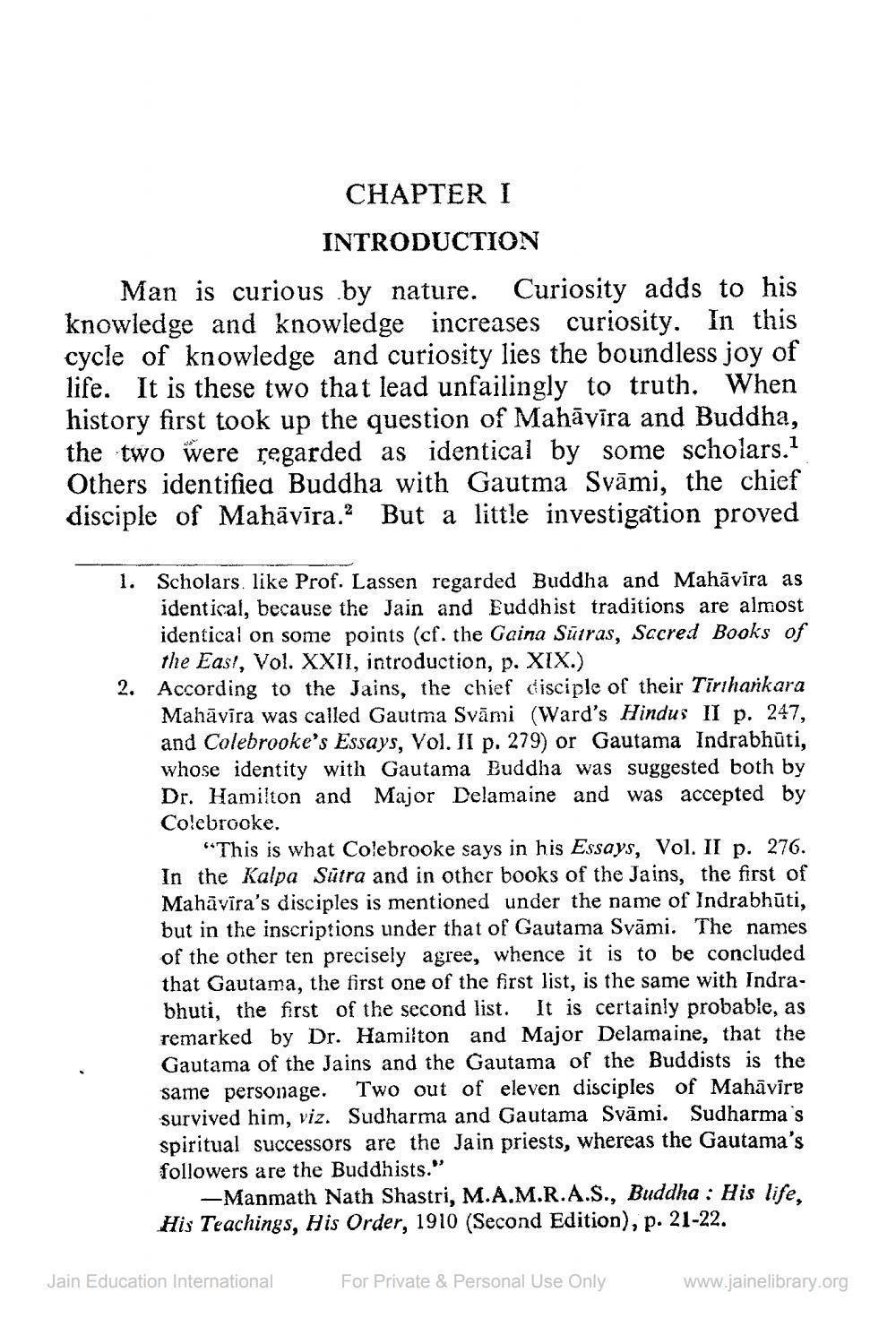________________
CHAPTER I
INTRODUCTION Man is curious by nature. Curiosity adds to his knowledge and knowledge increases curiosity. In this cycle of knowledge and curiosity lies the boundless joy of life. It is these two that lead unfailingly to truth. When history first took up the question of Mahāvīra and Buddha, the two were regarded as identical by some scholars.1 Others identified Buddha with Gautma Svāmi, the chief disciple of Mahāvīra. But a little investigation proved
1. Scholars, like Prof. Lassen regarded Buddha and Mahāvīra as
identical, because the Jain and Euddhist traditions are almost identical on some points (cf. the Gaina Sūtras, Sacred Books of
the East, Vol. XXII, introduction, p. XIX.) 2. According to the Jains, the chief disciple of their Tirihankara
Mahāvīra was called Gautma Svāmi (Ward's Hindus II p. 247, and Colebrooke's Essays, Vol. II p. 279) or Gautama Indrabhūti, whose identity with Gautama Buddha was suggested both by Dr. Hamilton and Major Delamaine and was accepted by Colebrooke.
“This is what Colebrooke says in his Essays, Vol. II p. 276. In the Kalpa Sūtra and in other books of the Jains, the first of Mahavira's disciples is mentioned under the name of Indrabhūti, but in the inscriptions under that of Gautama Svāmi. The names of the other ten precisely agree, whence it is to be concluded that Gautama, the first one of the first list, is the same with Indrabhuti, the first of the second list. It is certainly probable, as remarked by Dr. Hamilton and Major Delamaine, that the Gautama of the Jains and the Gautama of the Buddists is the same personage. Two out of eleven disciples of Mahāvīre survived him, viz. Sudharma and Gautama Svāmi. Sudharma's spiritual successors are the Jain priests, whereas the Gautama's followers are the Buddhists."
-Manmath Nath Shastri, M.A.M.R.A.S., Buddha : His life. His Teachings, His Order, 1910 (Second Edition), p. 21-22.
Jain Education International
For Private & Personal Use Only
www.jainelibrary.org




